HOMILY FOR THE MASS OF THE LORD’S SUPPER 2020
by Francis Obafemi ADESINA (ST. CLARE MONASTERY CHAPEL)
I thank God for the opportunity to be in the Monastery of Poor St. Clare Nuns here in our Diocese to celebrate the Mass of the Lord’s Supper, which commences the Easter Triduum of the Passion and Resurrection of the Lord Jesus. Incidentally, this is the first Mass of the Lord’s Supper that I am celebrating as the Local Ordinary of the Catholic Diocese of Ijebu-Ode having been ordained to the Episcopate on Easter Thursday last year. May this Eucharistic celebration impact on each one of us, the entire Church and World, the fruits of the mystery it represents. Amen.
Tonight, in a very symbolic and special way every one of us takes his or her place at the Cenacle (the Upper Room) in Jerusalem, where Jesus ate the Last Supper with the 12 Apostles on the night of the Jewish Passover. In that last supper, Jesus gave the Jewish Passover its definitive meaning by instituting the Holy Eucharist.
In all our Parish churches in the Diocese tonight, we celebrate the Mass of the Last supper without the usual congregations on account of the restrictions in place because of Corona Virus pandemic, we are however very happy to commemorate three important mysteries:
1) THE INSTITUTION OF THE HOLY EUCHARIST;
2) THE INSTITUTION OF THE SACRED PRIESTHOOD; and
3) THE SOLEMN INVITATION OF JESUS TO FRATERNAL CHARITY (DIACONIA) – TO LOVE AND SERVE ONE ANOTHER. We are invited tonight to enter into the Sacred Paschal Triduum reflecting on the mysterious gifts of the Holy Eucharist and Sacred Priesthood in the Church, knowing that both mysteries are given and received in the Church for the purpose of salvation of our souls.
The Holy Eucharist:
On the night of the Last Supper with the Apostles, the Lord Jesus, loving those who were his own in the world even to the end, offered his Body and Blood to the Father under the appearances of bread and wine when he said; “Take and eat, ‘this is my body which is given up for you”. Taking the Chalice, he also said “This chalice is the new covenant in my blood, which is shed for you. Do this in remembrance of me.” The Gospels of Matthew, Mark and Luke recorded how this event occurred (rf. Luke 22,19-20; Mark 14,22-24; Matt 26,26-28). What is the significance of the institution of the Holy Eucharist? Why did Jesus break bread and took up chalice filled with wine? The significance of what Jesus did at the Last Supper is the focus of John’s narrative in the Gospel passage we have just read (John 13,1-15). For John, Jesus is the Lamb of God sacrificed for the salvation of the world. He comes from the Father and returns to Him in glory. Jesus is the Master at the Last Supper, who becomes the servant washing the feet of his followers. Amidst, the pains of imminent betrayal of Judas Iscariot and the abandonment of his trusted disciples, Jesus testified to the everlasting Love of God the Father by instituting the Holy Eucharist and the Sacred Priesthood. The two inseparable sacraments through which Christ’s redemptive action is perpetually made available to the world.
In the breaking of bread (factio panis), we Catholics do more than just sharing symbolic meal like some churches do. For us, the breaking of the bread means Jesus self-sacrifice of his life. Jesus “breaks” and “makes” himself food for us as Prophet Isaiah said in chapter 53,5: “He is wounded for our transgressions. He was bruised for our iniquities. The chastisement for our peace was upon Him. And by his stripes we are healed.”
How could anyone explicate intelligently the essence of the interior act that accompanied the action of “breaking of bread” at the Last Supper considering the enormous tension and strive in the Upper Room, first in the mind of Jesus who is about to face his passion and death on the Cross; secondly, in the minds of the disciples of Jesus who were preoccupied with power and were lobbying for prestigious positions? It suffices to say that Jesus’ action at the Last Supper was/is the most supreme act of love and tenderness that has ever been made, or can ever be made on earth.
The Holy Eucharist is the sacrament of our salvation accomplished by Christ on the Cross. It is also a sacrifice of thanksgiving to the Father. It is a blessing by which the Church expresses her gratitude to God for all his benefits, for all that he has accomplished through creation, redemption and sanctification. The Holy Eucharist is indeed “thanksgiving” and “praise” in the name of all creation. No wonder, St. Paul could not alter the celebration of the Holy Eucharist to suit his own style of evangelization. He confessed in his 1st Letter to the Corinthians 11, 23-26 that, “I received from the Lord what I also handed down on to you, that the Lord Jesus, on the night he was handed over, took bread, and after he had given thanks, broke it and said, “this is my body that is for you. Do this in remembrance of me”. He did the same with the cup.
My dear sisters and brothers in Christ, we cannot get too familiar with the celebration of the Holy Mass to the point of disrespecting Jesus in the Holy Eucharist. Jesus knows when we come to his banquet without proper wedding garments. He knows when we come to the Holy Eucharist with our hearts distracted and stained by sin. Jesus knows when we worship and receive Him out of mere routine lacking devotion. St. Gregory the Great in one of his homilies on the Holy Eucharist said, “those who are invited and enter into the Lord’s banquet are those who have faith. But they lack the ‘wedding garment’ of love, those who do not live their faith as love. Such people are not ready for the banquet of the Lord and they are cast out”. May you and I and all those who are praying with us from their homes, not become cast out in the heavenly banquet of the Lord. Amen.
Eucharist and Priesthood:
The Holy Eucharist and the Sacred Priesthood “were born” at the Last Supper and that is why the two sacraments are so intrinsically linked. In the words of St. John Paul II (2004), he said; “At the last supper we were born as Priests”. “We were born from the Eucharist. If we can truly say that the whole Church lives from the Eucharist…we can say the same thing about the ministerial priesthood: it is born, lives, works and bears fruit “de Eucharistia.” In other words, there can be no Eucharist without the Priesthood and there can be no Priesthood without the Holy Eucharist. Therefore, we ordained priests are not just functionaries working for the Church. Every ordained priest is a “man of the sacred” consecrated to the worship of God and to the work of evangelization. This and no other is the priest true identity! No matter the assignment a priest has in his Diocese, the best part of his ministry is the daily celebration of the Holy Eucharist, where he acts in persona christi capitis and makes present on the altar, the sacred Body and Blood of Jesus. It is sad and very sad indeed, that some priests today are no longer identified by their intimacy with the Holy Eucharist or by their exemplary life of the Gospel; but rather, prefers to be known and identified by their secondary functions or assignments. Tonight’s solemn celebration of the Last Supper of the Lord invites all of us who share in the ministerial priesthood of Christ to re-examine our consciences and to re-define our identity in relation to the Holy Eucharist.
The Command of Fraternal Charity
The third mystery we commemorate tonight is Jesus’ command of Fraternal Charity. In the Lukan and Pauline accounts of the Last Supper, we read the command of Jesus: “Do this in memory of me” (Luke 22,19; 1Corth 11,24). A similar idea is expressed in John 13,15: “I have given you an example, that you also should do what I have done to you”. These two instructions are related in meaning. The first command is about “doing a memorial”. It refers to the Eucharistic Liturgy of the Church. The second command is about “doing what I have done to you”. In its immediate context, it refers to the washing of the feet of the disciples; therefore, it refers to life. The possible message to take away from the dual commands given by Jesus is that his faithful followers must be ready to press forward from ‘memory to imitation’, from ‘Eucharistic Liturgy to Eucharistic living’; from ‘worship of God to diakonia – a life of service of love’.
By washing the feet of the Twelve, Jesus, who is truly God and truly man emptied himself taking the form of a servant/slave in order to give a perfect example of what leadership entails. According to the Gospel of St. John, Jesus gives the ‘live parable’ of the washing of the feet at the Last Supper because of the dispute that arose among the disciples as to which of them is the greatest (Lk 22,24). While the Twelve were engrossed in authority-debate, the Master Jesus, silently arose from the table, fetched a basin of water and with a towel, washed the feet of his disciples. Jesus must have embarrassed the 12 disciples when he added, “do as I have done to you”. By so doing, Jesus insists that service to one another as the right “way of life” and the “model of relationship” within and outside the Church. Hence, “foot-washing” is the norm for authentic leadership in the world. Unfortunately, tonight, we are dispensed of this rich symbolic rite because of COVID-19 pandemic.
May the mysteries and gifts we celebrate tonight strengthen our will so that we may have the courage to journey with Jesus from the Upper room to Gethsemane, from Gethsemane to Golgotha, and from Golgotha to the Joy of the Resurrection. Amen.
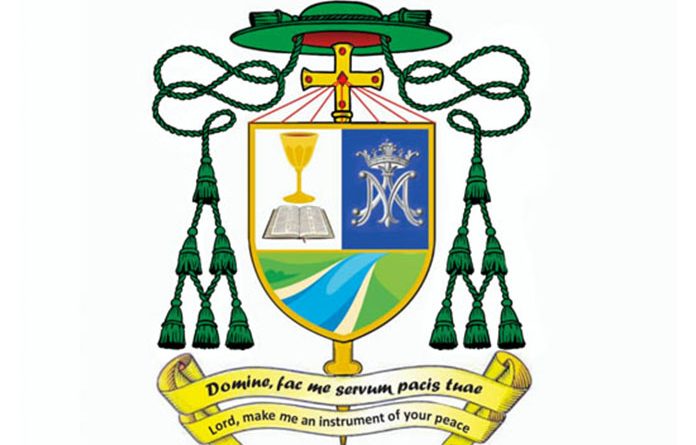
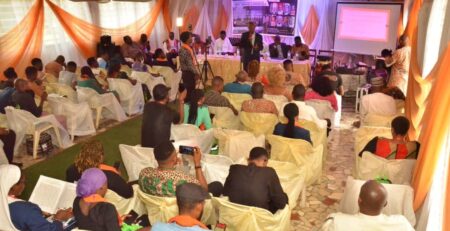

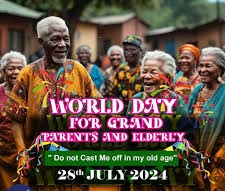
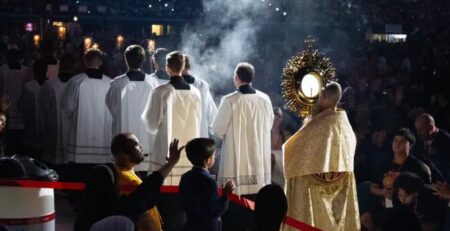
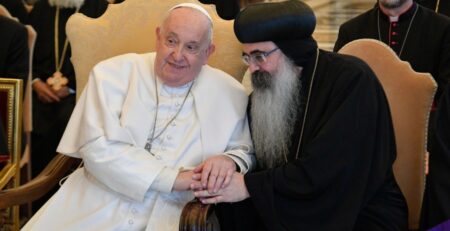
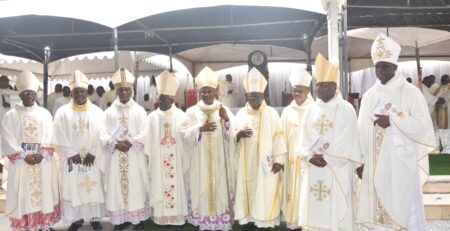

Leave a Reply